Interview and editing The Kanto team
Images Saira Puyat Nepomuceno (RISD)
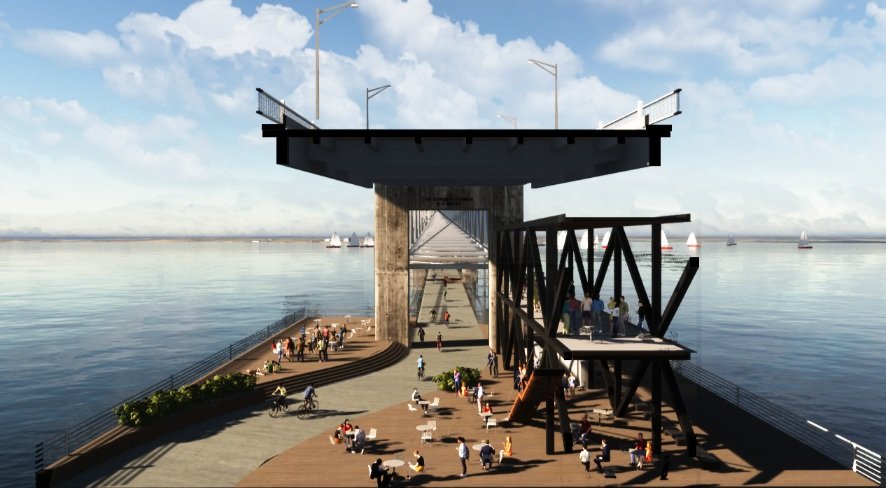

Across cities worldwide, the car-centric infrastructure of the 20th century now stands as a barrier to quality public spaces and active mobility. The Claiborne Pell Bridge in Rhode Island is one such case: a 3.5-kilometer span built in 1969 that connects coastal communities and enables inter-regional logistics. As a toll road, it has become the exclusive domain of motor vehicles, with no access for pedestrians or cyclists.
Crossing the Pell, a multi-year studio under Rhode Island School of Design (RISD)’s MA in Adaptive Reuse program led by Professors Liliane Wong, Michael Grugl, Andrew Hartness, and Wolfgang Rudorf hits the nail right on the head. Graduate students from the school’s Interior Architecture and Landscape Architecture departments were asked to rethink the bridge as a civic platform for expanded access, equity, and shared use.
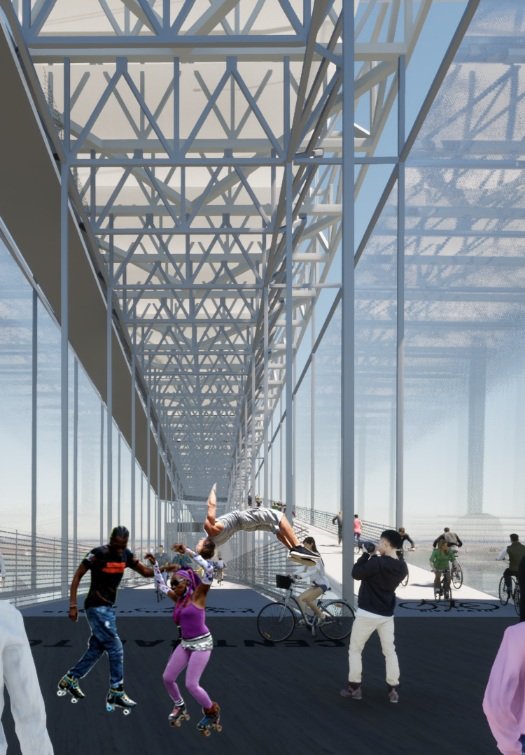

Among the four resulting schemes, the Kanto-submitted project All the World’s a Stage by Saira Margarita Puyat Nepomuceno (INTAR) and Seung Hwan Oh (LDAR) proposes a series of surgical additions: a second truss for walking and cycling, a bus stop, floating decks, and a transformable segment that becomes the world’s largest outdoor theater, viewable from boats or a new floating amphitheater. The design embraces the bridge’s original structure as the spine of the proposal, mimicking its architectural language while opening it to new publics.
Developed in 2021 as Nepomuceno’s capstone project at RISD, the work is now on view at Palazzo Mora in Venice as part of Time Space Existence, a collateral exhibition of the 2025 Venice Architecture Biennale hosted by the European Cultural Centre, running until November 23, 2025. We spoke with Puyat Nepomuceno about her work and how adaptive reuse could help expand the civic imagination when it comes to designing future community spaces. Our interview with the architect follows the edited project brief.
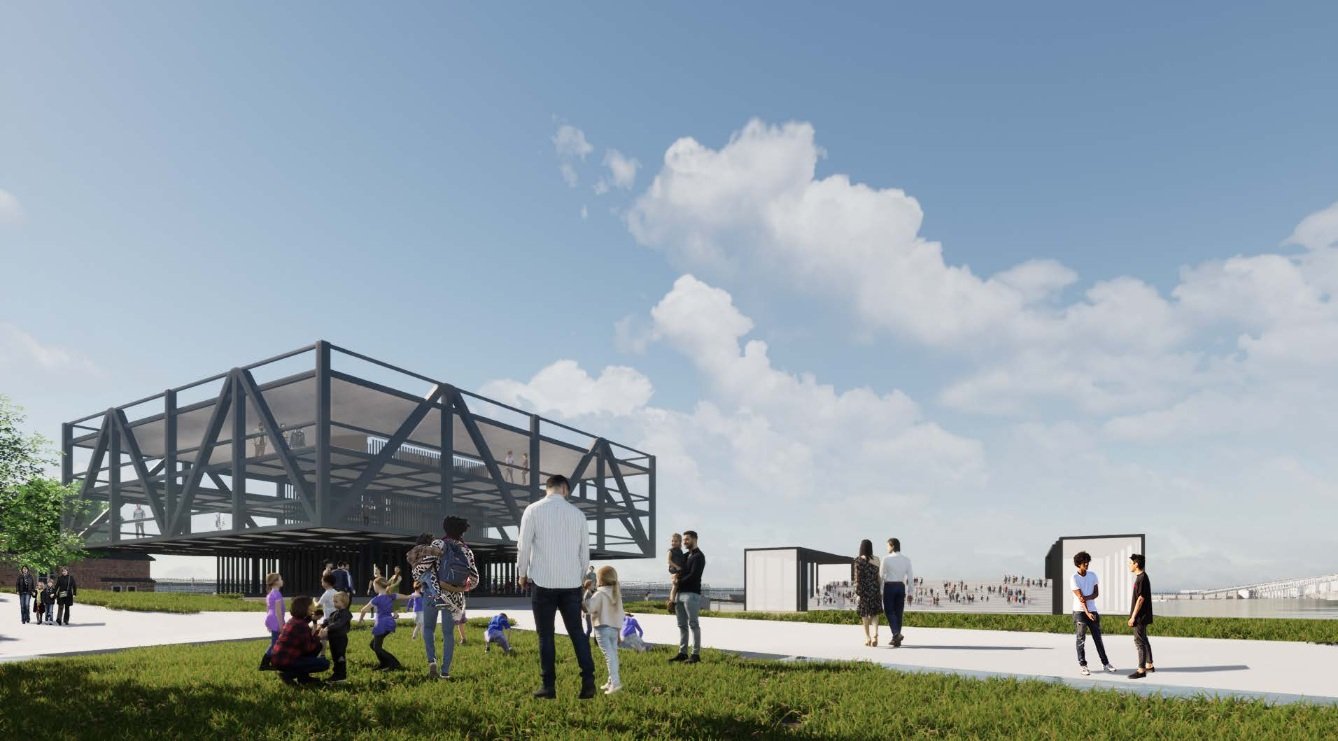

All The World’s A Stage
Spectacle is the heart of entertainment in Newport, from the annual Jazz Festival to the regattas in Narragansett Bay. This project embraces such vibrancy and extends the cultural wealth to the Bay and Newport’s North End.
As part of the proposed retrofit of the Claiborne Pell Bridge, the addition of bike and pedestrian access introduces a scheme of public spaces that celebrate the spectacle of everyday life. Through technology, a section of the bridge will transform into the world’s largest outdoor theater, viewable and accessible from one’s boat or a seat in a new floating amphitheater.
The Voyager anchors this outdoor theater: a system of wind-responsive panels and retractable seating that adapts to climate and performance needs. Performances unfold against shifting backdrops, with seating that retracts to reveal a multi-use space. When not in use, the panels serve as projection surfaces, generating additional revenue. The theater and adjacent venues, including the Café and Welcome Center, support local employment and contribute to the city’s cultural economy.



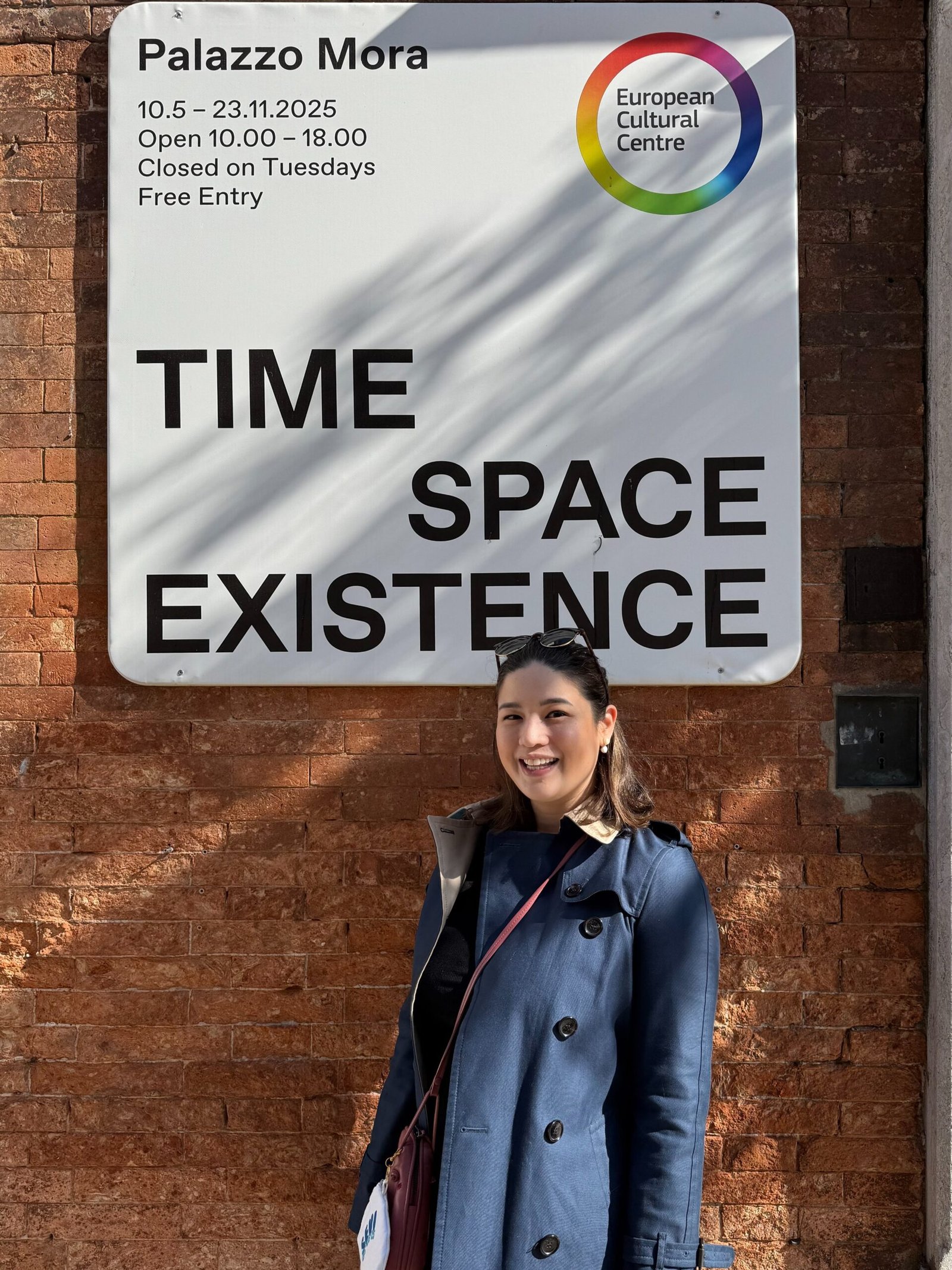
Saira Puyat Nepomuceno 
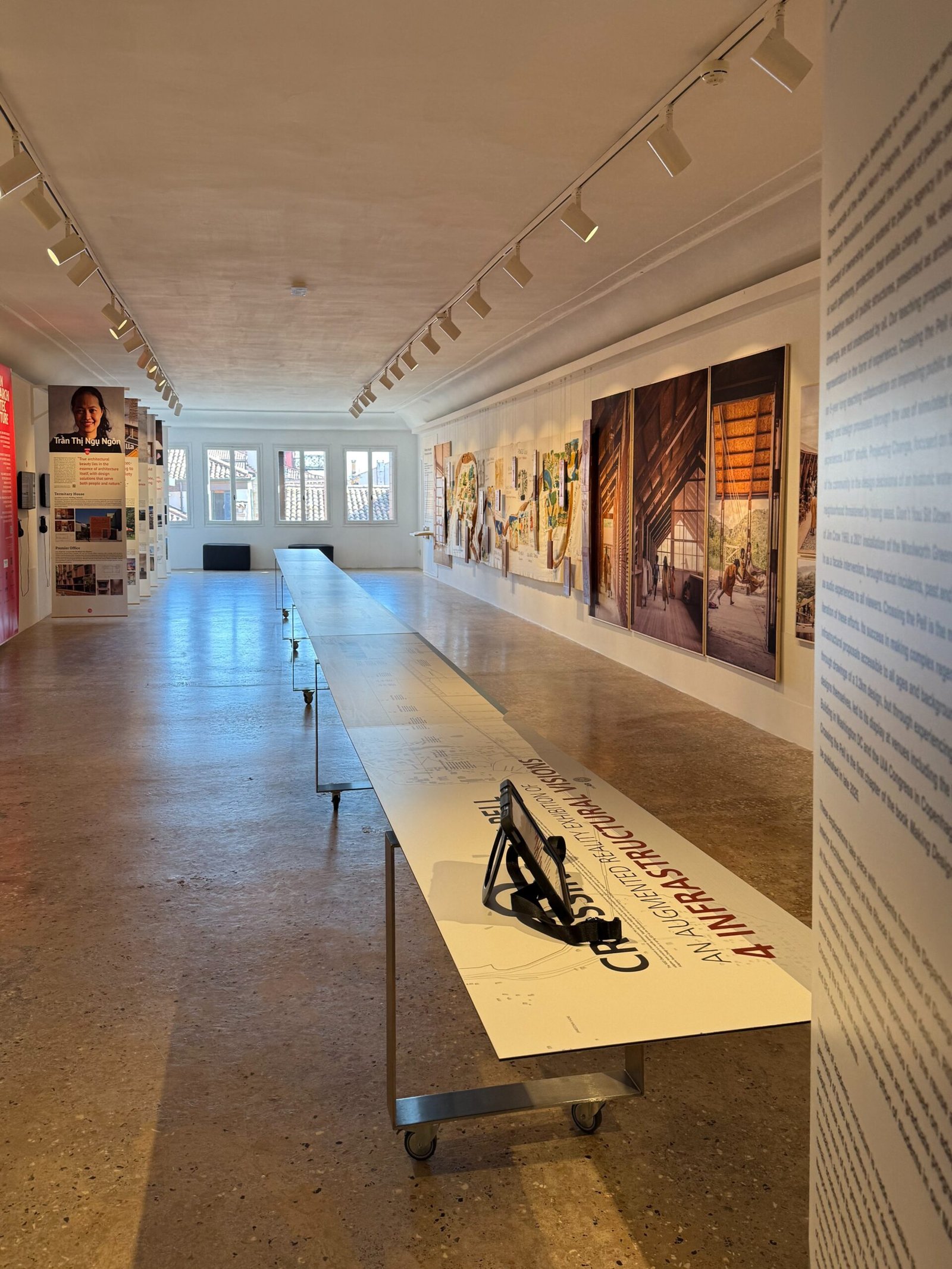
Crossing the Pell at Palazzo Mora
You borrowed the title of your project from an oft-quoted line from Shakespeare’s “As You Like It.” Beyond its Shakespearean origins, what compelled you to reimagine car-centric infrastructure as a space for gathering and pause? What were your priorities and ultimate vision for the project?
Saira Margarita Puyat Nepomuceno, RISD MA 21 IA, principal of Studio Saira: Beyond the Shakespearean metaphor, I wanted to use my scheme to challenge how we perceive mobility and public life. While others focused on construction innovations like structural netting and 3D printing, my starting point was more conceptual: how could the bridge evolve beyond its utilitarian function? I wanted it to serve not just as a landmark or a means of transportation, but as a destination in itself —a place where people could pause, connect, and experience the city from a new perspective.
The Claiborne Pell Bridge remains a vital artery between the towns it serves: Newport and Jamestown. How does your proposal coexist with its current motor-heavy use? How does it provoke new civic possibilities without sacrificing its utility?
Puyat Nepomuceno: In my scheme, the walkway and bike lanes are placed on a second truss added to the bridge. This was our way of introducing something new without compromising the original design, which many locals are adamant about preserving. The Senator of Rhode Island actually commissioned the project at the time to show the public what their bridge could become if it were to be renovated.
Your design boldly proposes the world’s largest outdoor theater. How do you imagine sound working in such a vast, ambient space? Have you considered how this might impact local wildlife, particularly birds?
Puyat Nepomuceno: Since Jamestown and Newport are relatively quiet areas, I imagined the sound being contained within the Voyager itself. Perhaps only a specific zone would utilize speakers, primarily for individuals on private boats, to minimize noise spillover. The goal has always been to be sensitive to the surrounding environment.


Crossing the Pell display incorporates an AR display 
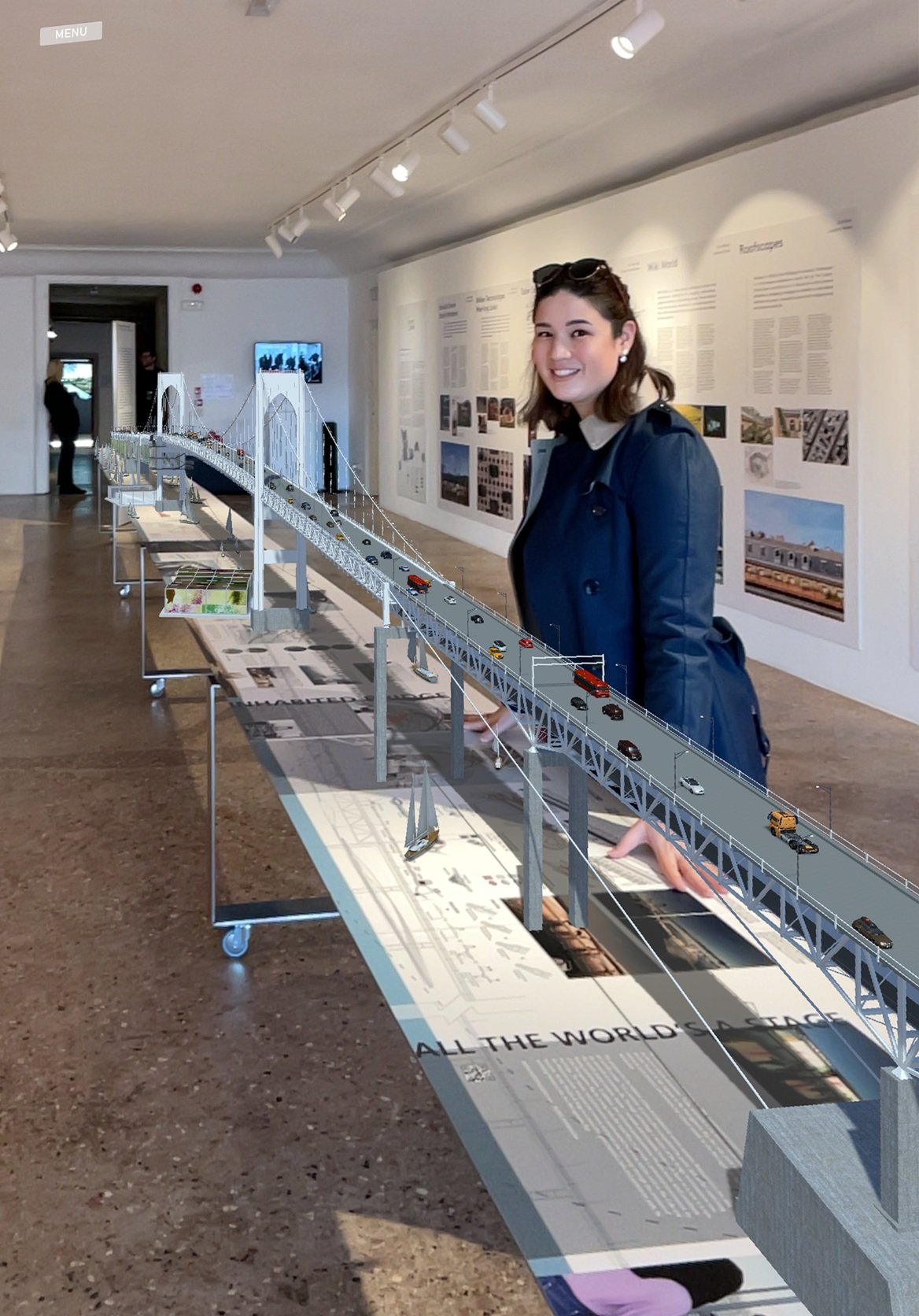
AR depiction of the Claiborne Pell Bridge
As a real-world proposal, who do you envision as its proponents? What systems or programs would sustain its existence beyond the initial civic gesture?
Puyat Nepomuceno: Newport, Rhode Island is already a tourist destination, especially now with shows like The Gilded Age being filmed there. I imagine the City Government of Newport would take charge of the bridge and its programming if the design were realized. RISD has also been working closely with Bike Newport to showcase our projects at various venues, including City Hall and conventions in Washington, D.C., so I see them playing a key role as well in sustaining the program.
How did your proposal complement or challenge your peers’ work within the studio? What did the exercise teach you about the designer’s power to shape infrastructure not just as service, but as harm, and potentially as repair?
Puyat Nepomuceno: I think my proposal challenged my peers to give their schemes a deeper sense of purpose; that innovative construction methods alone weren’t enough. At the same time, their work inspired me to incorporate my own layer of innovation: the smart screens in my design, which respond to the direction of the wind. This capstone project brought together everything we learned during our year and a half at RISD in the Master of Arts in Interior Architecture – Adaptive Reuse program.
Your body of work is described in the release as rooted in Filipino heritage and island resilience. Would you say these influenced your approach to the Pell Bridge, a structure thousands of miles away from home? What parts of your identity as a designer shaped the way you imagined this project?
Puyat Nepomuceno: Absolutely. Although the Pell Bridge is far from the Philippines, my approach was deeply informed by my background. Growing up in an archipelago taught me that bridges are not just physical connectors but lifelines. In the Philippines, resilience is woven into our daily experience of living with water, weather, and change. That sense of adaptability, of finding continuity between land, sea, and community, became central to my understanding of the bridge as a civic space.
I wanted the Pell Bridge to feel less like an object of engineering and more like a stage for everyday crossings, turning movement into a collective ritual. In many ways, my identity as a Filipino architect, shaped by island geography and cultural empathy, helped me see the bridge as both a monument and a meeting ground, connecting both places and people. •
Time Space Existence by the ECC is at the Palazzo Mora in Venice, Italy. The exhibit is open daily from 10 a.m. to 6 p.m., except Tuesdays. Admission is free. The show ends on November 23, 2025

